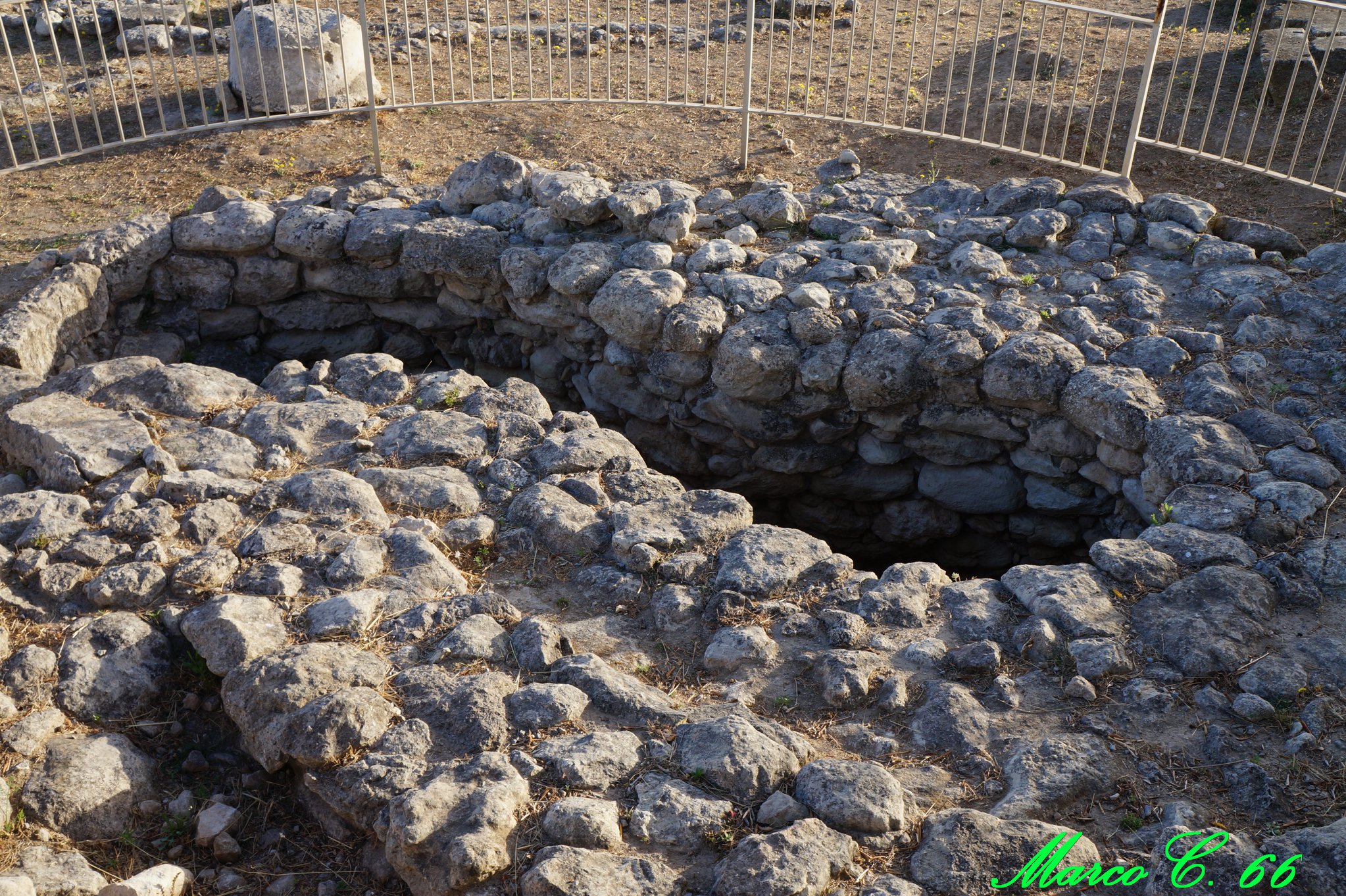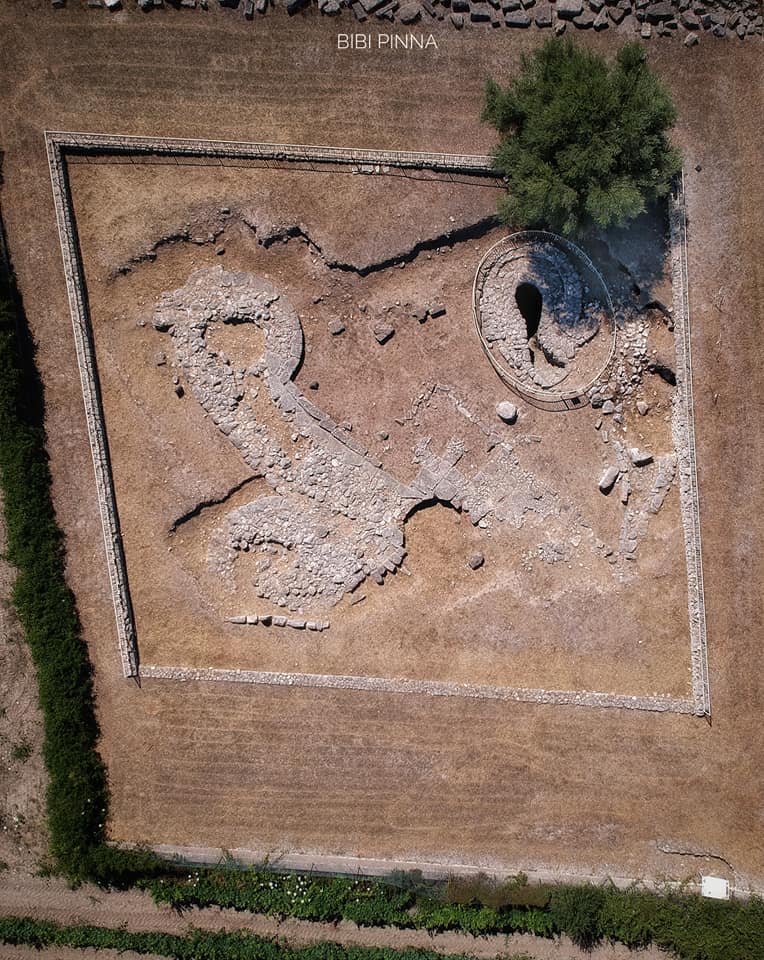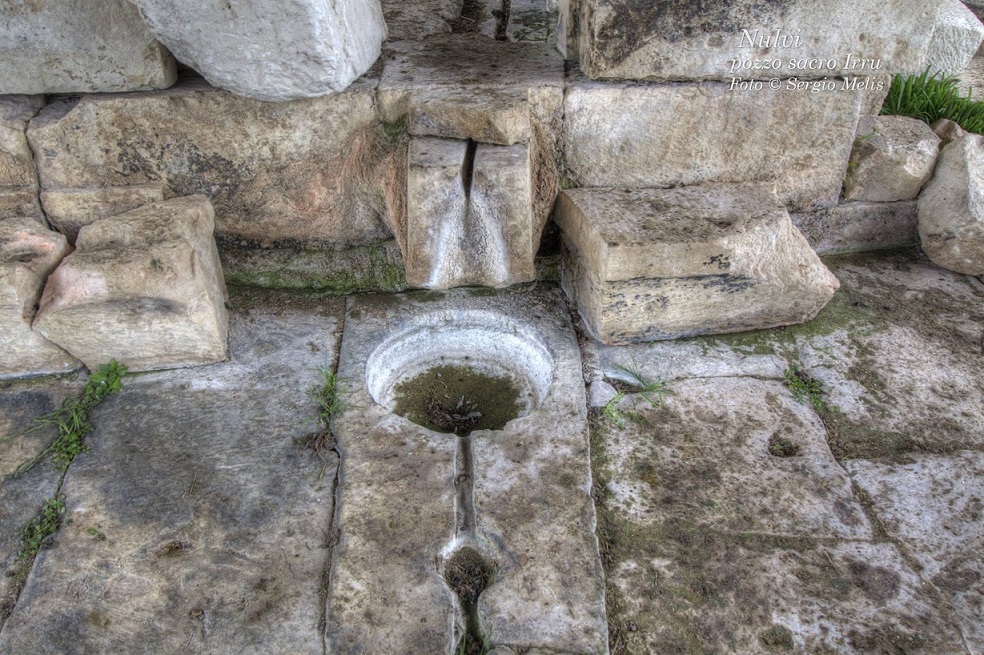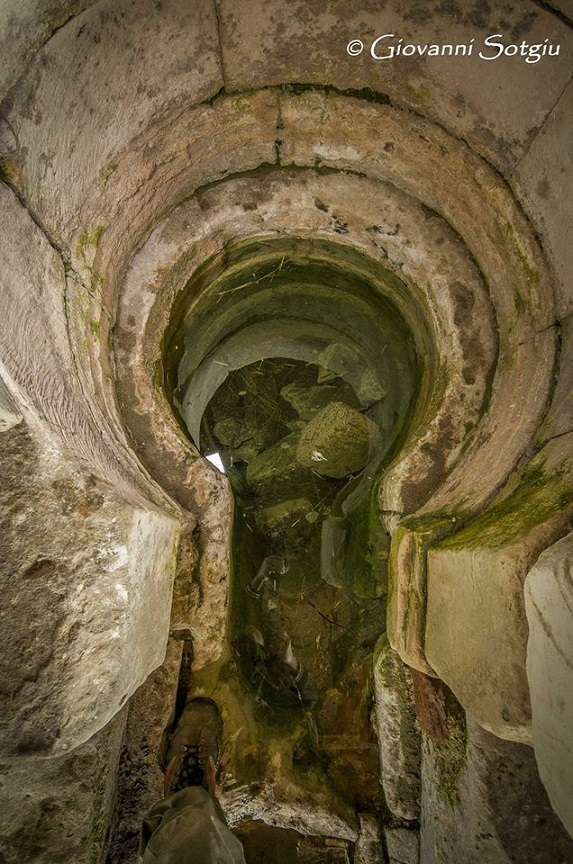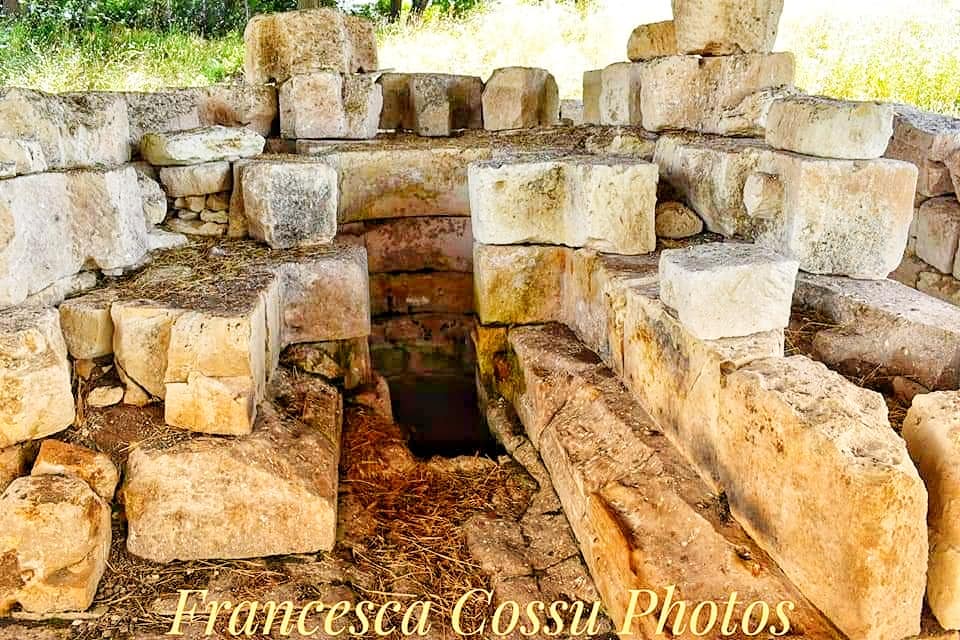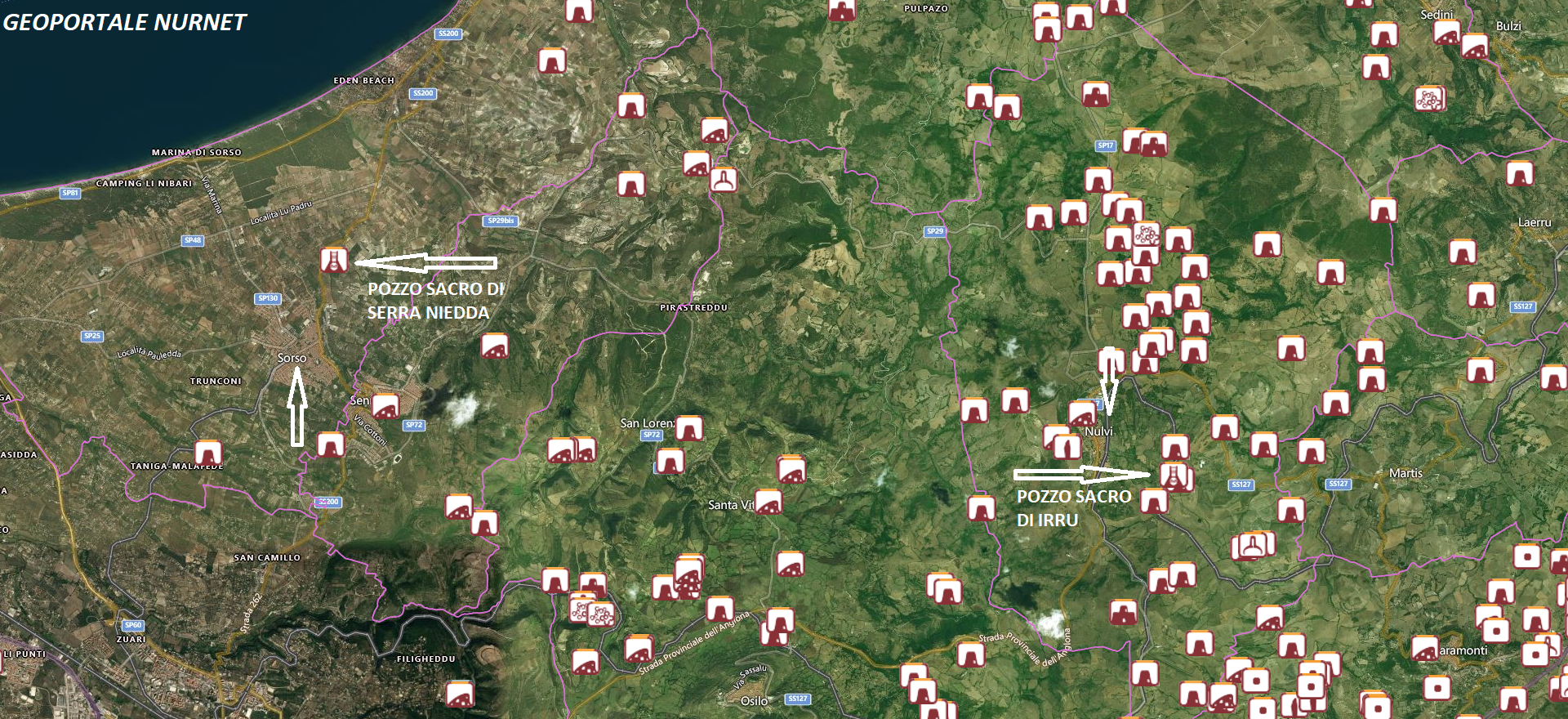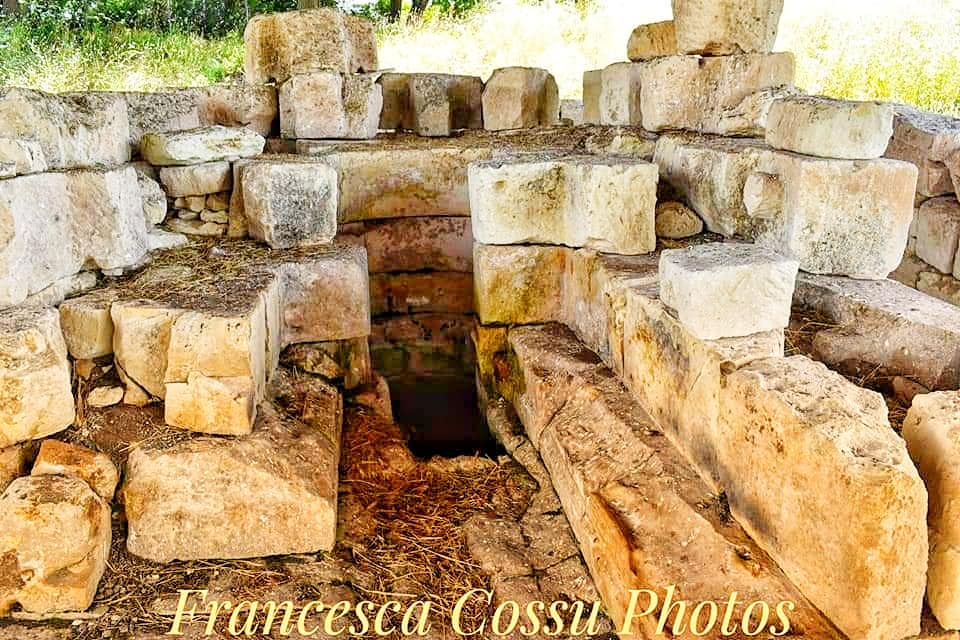9.2 and 10.2: The sacred well of Serra Niedda, in Sorso, was discovered in 1985, completely by chance, during stone removal work for the planting of a vineyard. Investigations continued until 1988 and allowed for the identification of the main core of the sanctuary, composed of the sacred well, a round structure that characterizes part of the large isodomic building, and two cylindrical-shaped constructions, interpretable as altars. The collected data suggest that the evolution of the architecture of the water sanctuary spans a time frame from the 12th to the 8th century BC, from the time of the Late Bronze Age to the Iron Age. The excavations cover a total area of 350 square meters. The well occupies the southeastern area of the sanctuary: it consists of the well chamber, with a circular base and a staircase of 14 steps. The isodomic temple is a large structure (with a total length of about 15 meters) originally consisting of a circular chamber with a diameter of 6 meters and a trapezoidal corridor. At the end, there is a cylindrical shaft cistern. (City of Sorso)
The sacred well of Irru, in Nulvi, dated around 1000 BC, is made of finely worked limestone and has impressive dimensions: 16 meters long and 7.5 meters wide. The entrance consists of a paved vestibule on two different levels: the first atrium has a circular basin on the floor and a channel that drains into a stone basin; the second, higher atrium, has a central channel and leads to the circular chamber of the well. This is 4.5 meters deep and constructed with perfectly smoothed blocks, arranged in regular rows of equal height. The recovered artifacts span from the Nuragic period to the Byzantine era and can be admired in the nearby Archaeological and Paleobotanical Museum of Perfugas. Noteworthy for their refined craftsmanship are the stone artifacts: a ram’s head, numerous blocks with protruding bossages, fragments of models of nuraghi, similar to those found at Mont’e Prama, with a tall central tower and slender side towers, and the triangular blocks that marked the peak of the roof. Due to the particularly refined construction technique and the bossages in the blocks, the well of Irru can be compared to the Predio Canopoli well in Perfugas, likely created by the same craftsmen. (Nuova Sardegna 3 Nov. 2019)
The photos of the sacred well of Serra Niedda, in Sorso, are by Marco Cocco, Bibi Pinna, and Nuraviganne. Those of the sacred well of Irru, in Nulvi, are by Sergio Melis, Giovanni Sotgiu, Andrea Mura-Nuragando Sardegna, and Francesca Cossu.